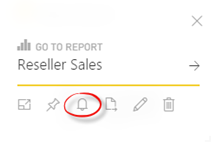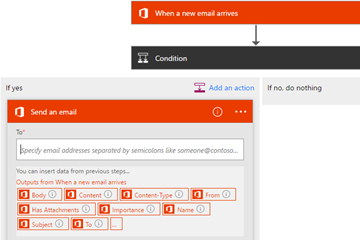Going with the Flow
Currently in preview, Microsoft Flow is a cloud service for creating automation flows without writing code, similar to Zapier’s “zaps” and IFTTT’s “recipes”. How is this useful for BI? Let’s consider an example. Power BI has recently introduced data-driven alerts in Power BI Service (previously alerts were supported on iPhone only). Currently, alerts can be created only on single-card and gauge dashboard tiles that are connected to imported datasets. You can go to the tile properties and click the Manage Alerts (bell) icon to create an alert rule, such as “SalesAmount is above 1,000,000.”
When the alert rule condition is met, you are notified in the Power BI notification center and by e-mail. But what if you want to broadcast the alert to a large audience? Currently, this feature is not a Power BI native feature. Sure, you can forward the email manually but what if you’re on vacation or the alert is triggered outside working hours but you need to notify certain people immediately? Enters Microsoft Flow that allows you to create simple if-then-else flows. In the screenshot below, I’ve created a trigger that checks my Office 365 email account for emails sent from noreply@powerbi.com and the subject contains “Alert”. If this condition is met, the “yes” action forwards the email to additional people.
Microsoft flows has a comprehensive list of triggers and actions for integration with many popular services, such as Dynamics CRM, Salesforce, SQL Server, MailChimp, SharePoint, Facebook, GitHub, and many more. Naturally, Microsoft Flow integrates very well with Microsoft cloud and on-prem services. It also has an extensible architecture that allows developers to plug in additional services. Together with PowerApps, Microsoft Flow has a bright future to help you automate your business processes and get actionable insights.






